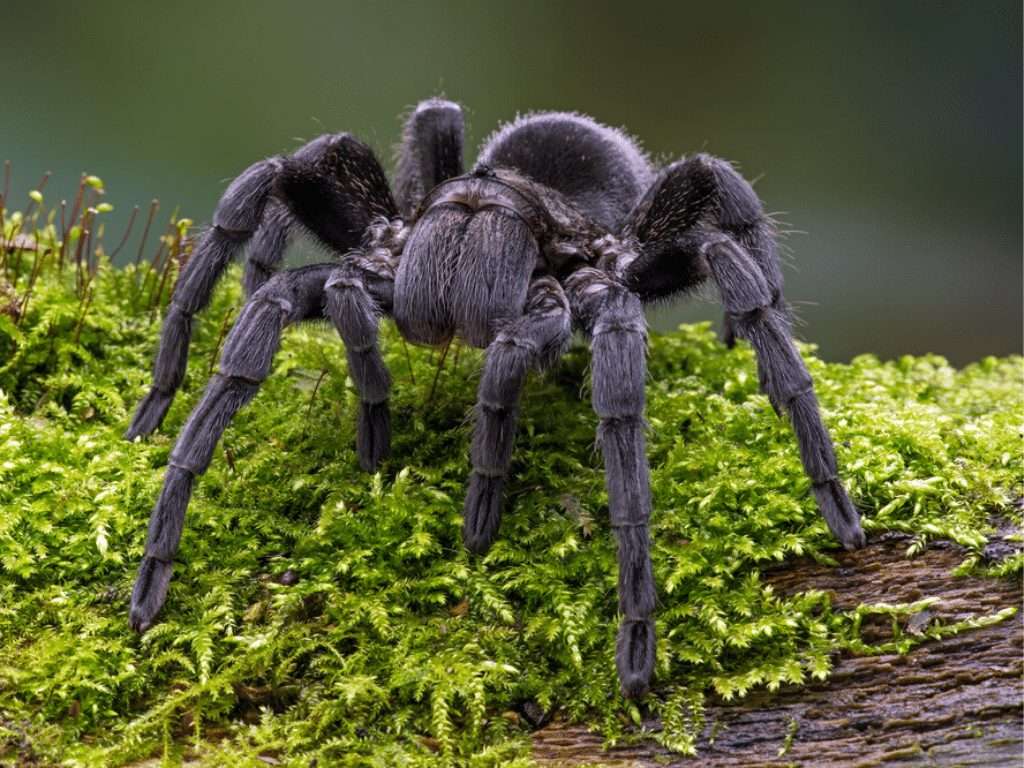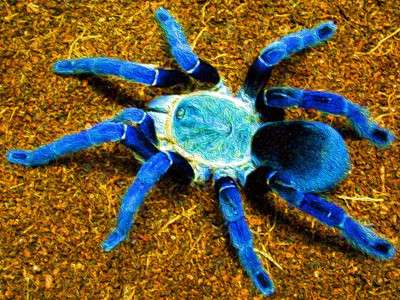
A species of tarantula from Brazil’s native Theraphosidae family is called Grammostola pulchra. It is well recognized for having a full black body, which appeals to the pet trade and makes it a desirable tarantula. The Brazilian Black Tarantula, commonly known as the Grammostola Pulchra, is another option that is suggested for new hobbyists. These spiders are endemic to Brazil and Uruguay. Brazil has a tropical and wet climate, which pretty much sums up the country’s weather. There are almost no dry seasons, and the majority of the year is spent in rain.
Pet
The species is sought after in the pet trade due to the females’ lengthy lifespans, well-known docile and kind temperaments, and alluring black coloring. When purchasing from a breeder, they are rather pricey because of these features. Its suitability as a pet is increased by the claim that it has a less propensity to kick urticating’s hairs off when handled. In contrast to other tarantula species, they frequently avoid spreading itchy hairs around their habitats. Mature females, who are desired for their long lifespans, are typically pricey due to a ban on the export of wild captured specimens and their slow growth.
Body Appearance
The body and hairs of the Brazilian black tarantula are both shades of black.
Cephalothorax
The cephalothorax (head and thorax combined) and the abdomen make up their two body portions. Even their jointed legs, which are nearly the thickness of a human finger, are coated in sharp hairs.
Size
Females can grow to reach 6-7 inches long, making them bigger than males. That is almost the same size as a typical cell phone. Brazilian black tarantulas move slowly, making it appear as though they are moving in slow motion.
Hairs
They use their hairs to detect activity around them despite having eight eyes on top of their heads.

Behavior
The majority of the lives of Brazilian black tarantulas are spent in their burrows. They either dig their own holes or take over an animal’s abandoned burrow. Being nocturnal creatures, they emerge from their tunnels at night to hunt for prey. They wait for prey to pass by while hiding in the top of their burrow rather than actively hunting. They consume insects, little mice, and tiny lizards. These creatures grab any animal that comes too close to their burrow and stab it with their fangs. In order for the tarantula to consume the insides, its venom paralyses the prey and the digestive secretions liquefy it.
Habitat
They favor the warm, moist grasslands where it is between 60 and 70 degrees. They reside primarily on the ground because they are terrestrial animals. They spend the day underground and only emerge at night to wait for prey to pass by while hiding at the entrance to their burrows. Brazilian black tarantulas are solitary creatures that live by themselves all the time, with the exception of when it is time to mate.
Geographical Location
The Brazilian black tarantula is native to Brazil, however it is also found in Uruguay.
Keeping as Pet
Size of Enclosure
A 12 by 10-inch habitat is needed for a Brazilian black tarantula when it is fully grown. These spiders are burrowers, so you can provide a thick layer of substrate inside the tank for your spider to dig into if the tank has extra height. However, you should only purchase a tall cage if you have enough substrate available. Your spider is at risk of falls that could cause damage or death if the tank is tall and the substrate doesn’t create adequate height. The optimal enclosure width should be up to three times the length of the tarantula’s legs. Given that terrestrial Brazilian black tarantulas like to explore the ground, the more breadth you can give them in their tank, the better.
Humidity and Temperature
Brazilian black tarantulas are accustomed to temperatures between 65 and 85 degrees Fahrenheit in the wild. To keep your spider comfortable, your enclosure should have the same temperature range. You won’t need to put extra heating in the tank if your home is at room temperature (68°F). However, a heating pad put beneath one side of the tank will be required if your body temperature drops below 68°F. Your tank can have a temperature gradient thanks to a heating pad, allowing your spider to choose between the warm and chilly sides. Your Brazilian black tarantula should be able to adjust its body temperature thanks to this.
Add a shallow dish of fresh water to the cage to maintain humidity in the tank. Brazilian black tarantulas require between 55% and 65% humidity. The spider may become dehydrated if the relative humidity is greater than this. Humidity can be measured using a thermometer.
Handling
Because of their calm disposition, Brazilian black tarantulas can be handled gently. To keep your spider from being startled, you should handle it calmly. Observe these procedures to handle your pet tarantula safely: Examine your spider to see if now is an appropriate moment to handle it. If your spider appears anxious or appears to be molting, refrain from handling it after feeding.
Grasp the spider by the body between the second and third pair of legs with your thumb and forefinger. Gripping too firmly could harm your tarantula’s body because spiders are sensitive.
Your tarantula should now be on your palm. Brazilian black tarantulas move slowly, so once it is on your palm, it probably won’t move at all. When handling your spider, avoid poking it or making rapid movements. This can make your spider run away. Return your tarantula to its enclosure after five minutes.
Table





